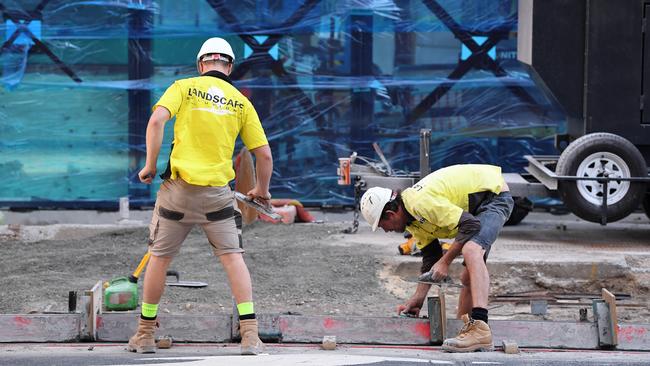Covid-19: Housing starts fall back but still higher than pre-pandemic
The pipeline of housing construction work constricted further in July but stayed well above pre-pandemic levels.

The pipeline of housing construction work constricted further in July but stayed well above pre-pandemic levels, as the number of council approvals to build new dwellings dropped a sharp 8.6 per cent in July.
The fourth straight monthly decline left building approvals 25 per cent down since the commonwealth’s generous HomeBuilder grant scheme ended in March, figures from the Australian Bureau of Statistics showed.
Approvals to construct new houses dropped 5.8 per cent, while approvals to build apartments fell 12.3 per cent, the seasonally adjusted numbers revealed.
Despite the retreat from the extraordinary highs of earlier this year – when Australians were rushing to grab $3bn in taxpayer money designed to stimulate the construction industry through the pandemic – the latest ABS figures showed there were still 28 per cent more house building approvals than in July 2020, and 36 per cent more than in July 2019.
CBA senior economist Kristina Clifton said there was “likely to be a further unwinding in approvals for detached housing to more ‘normal’ levels”.
“So far, from the price side, the housing market has been very resilient in the face of the pandemic, and we expect that to remain the case,” Ms Clifton said.
Approvals to build new houses in South Australia fell by a large 24 per cent, by 7.3 per cent in Victoria, 6.9 per cent in Western Australia, and 4.2 per cent in NSW.
In contrast, there was an 8.3 per cent lift in approvals to build new houses in Queensland, in seasonally adjusted terms.
Continued strength in the housing market was underlined by separate data from the Reserve Bank of Australia, which showed the value of total outstanding home loans lifted by 0.6 per cent in July.
Owner-occupier credit rose by a strong 0.9 per cent in the month while investor credit lifted by 0.3 per cent.
There was also a surprisingly large 1.1 per cent list in business credit, which economists said could be due to locked-down businesses drawing down on funding reserves to offset the impact of lockdowns.



